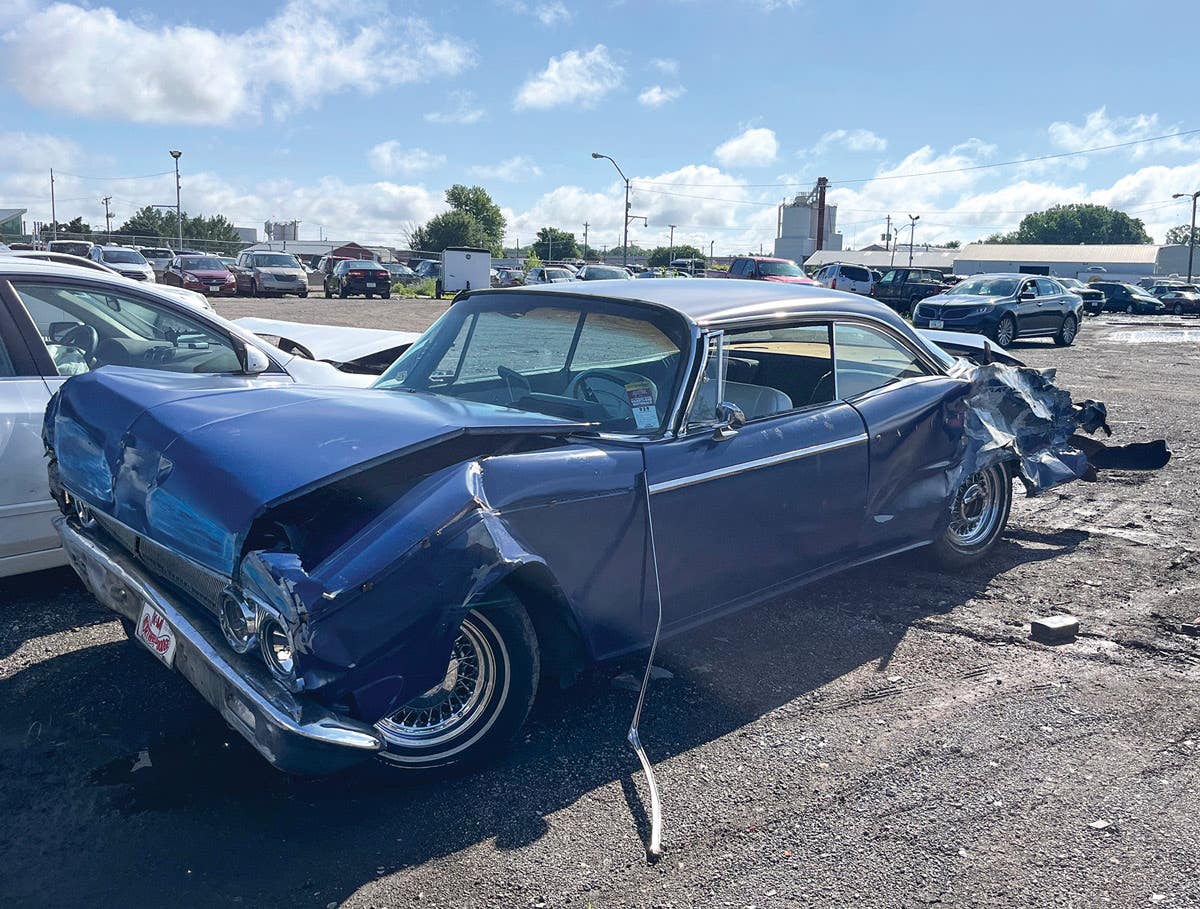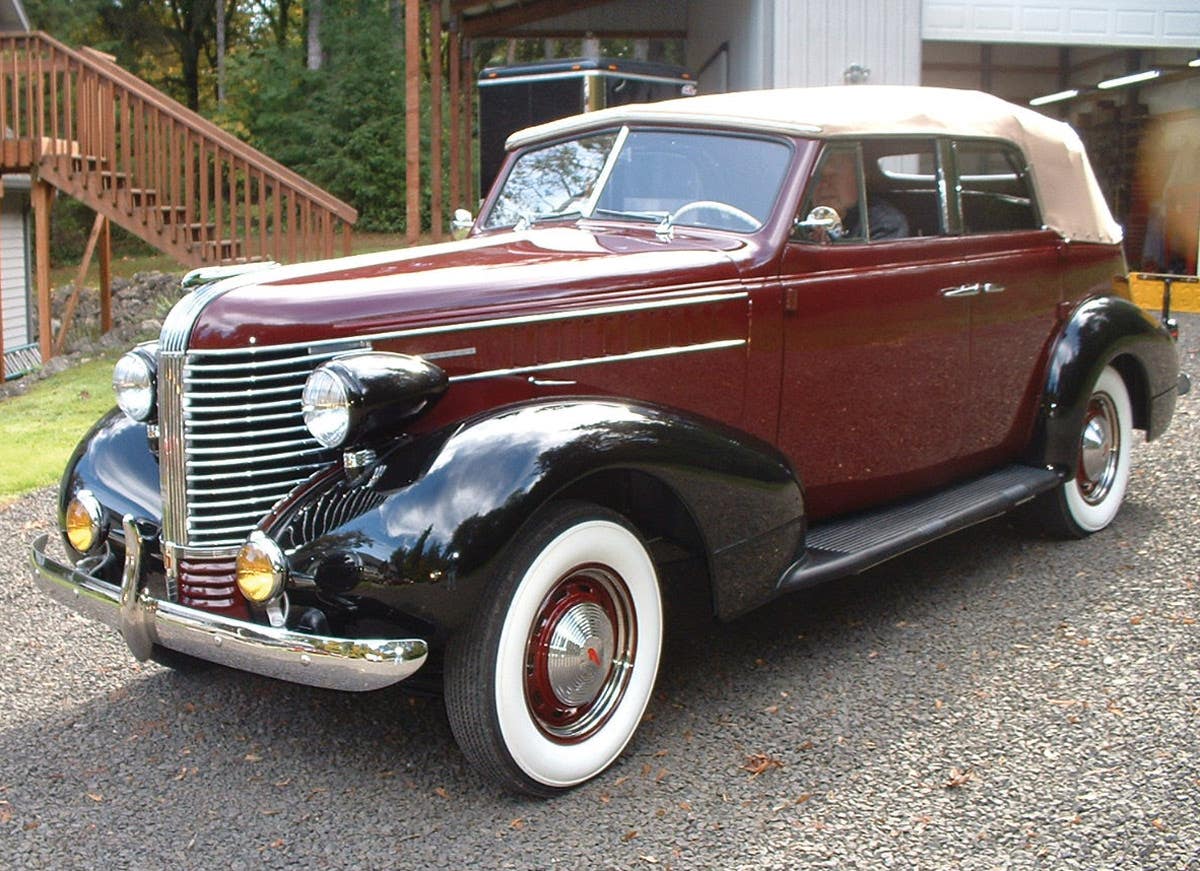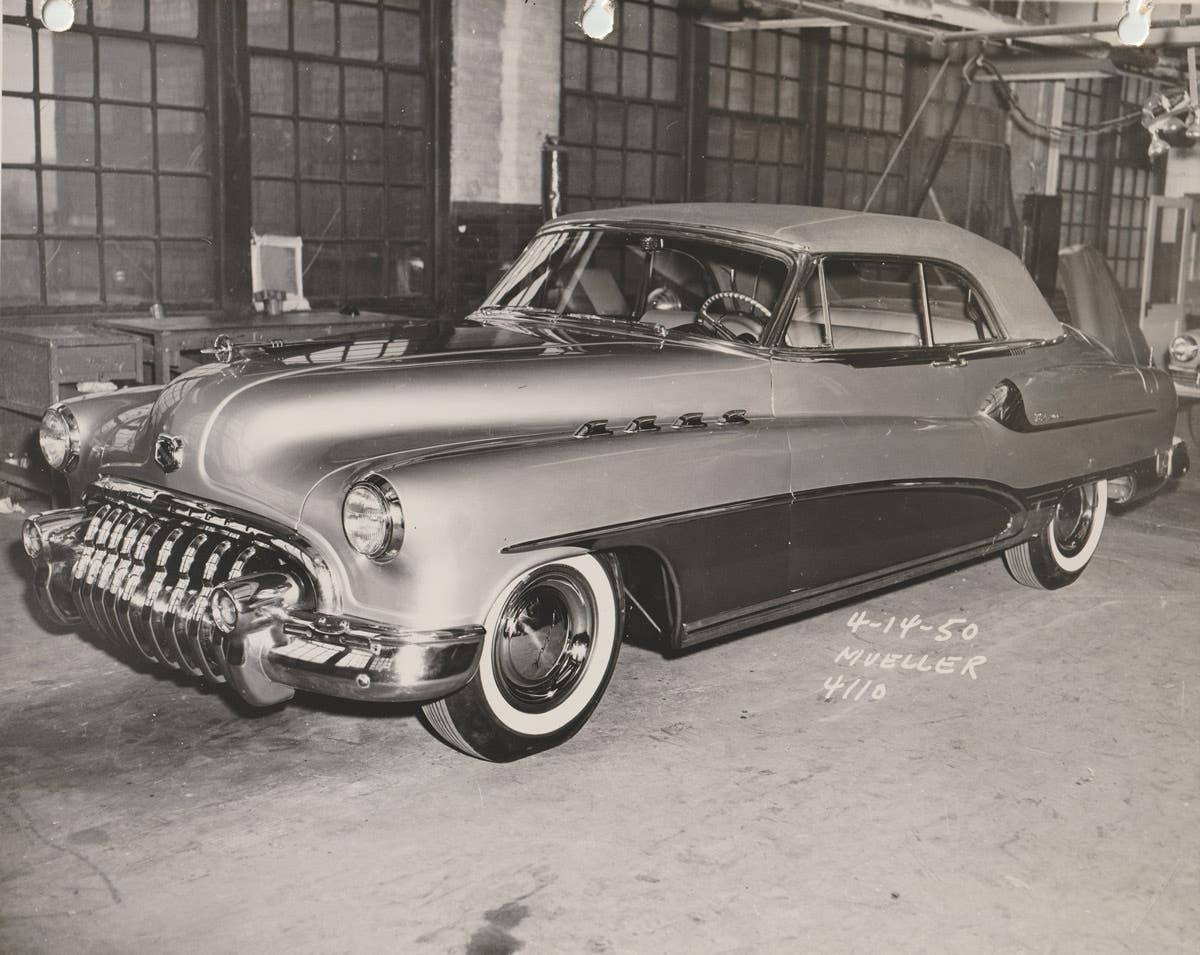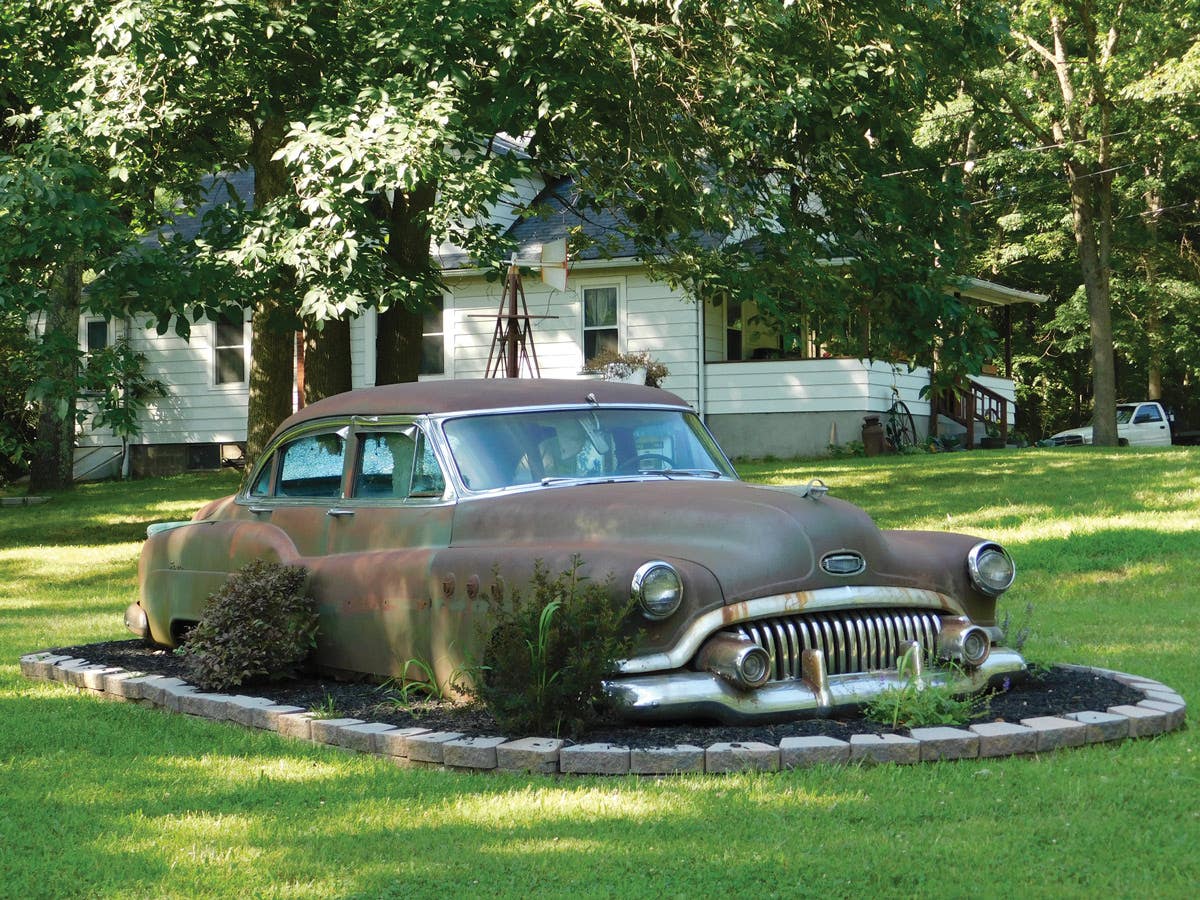Subsequent to Chevrolet debuting its sizzling new 1953 Corvette at the General Motors Motorama auto show, Ford Motor Co. countered two years later with the sporty-yet-elegant Ford Thunderbird. The Corvette and Thunderbird were both two-seaters with some production sedan components, but the likeness stopped there. While Corvette was presented to the motoring world as a sporty two-seater for more aggressive driving, the Thunderbird was introduced for cruising and luxurious personal transportation with no pretenses of being a sports car. It seems that’s just what the buying public longed for, and in its first year, Ford produced and sold 16,000 Thunderbirds, or roughly 23 T-Birds for every Corvette built.
Only details separated the 1956 Thunderbird from the 1955 models, but Ford gave its instantly classic convertible a significant makeover for the ’57 model year. The most notably updates to the existing body were the extended trunk lid and quarter panels with sharper, canted tailfins to accommodate the spare tire in the trunk, and a clean and open front grille that incorporated the bumper for a more cohesive front-end design. The “high-canted fenders,” Ford’s term for the 1957’s angled tailfins, were of a similar design between the full-size Fords and Thunderbirds, and nicely enunciated the longer trunk and quarter panels. Sales for 1957 increased more than 25 percent over the 1956 Thunderbird. Today, the 1957 Thunderbird has stood the test of time and is regarded as a legend in Detroit automotive design.
Developing the Thunderbird
Ford’s first step in developing the Thunderbird was a smaller two-seat sports roadster named the Vega, which was developed in 1953 at the request of Henry Ford II. The completed one-off show car generated interest, but had meager power, European looks and a correspondingly high cost, so it never proceeded to production. The Thunderbird was similar in concept, but was more American in style, more luxurious in nature and less sport-oriented.
Credit for the development of the original Thunderbird is given to Lewis Crusoe, a former GM executive lured out of retirement by Henry Ford II; George Walker, chief stylist and a Ford vice president; Frank Hershey, chief stylist for the Ford Division; Bill Boyer, designer for the Body Development Studio, who became the manager of the Thunderbird Studio in the spring of 1955; and Bill Burnett, chief engineer. Ford Designer William P. Boyer was the lead stylist of the original 1955 two-seat Thunderbird and also had input in the following series of Thunderbirds, including the 30th Anniversary Edition. Hershey’s participation in the creation of the Thunderbird was more administrative than artistic.
Crusoe and Walker had met in France during October 1951. While walking in the Grand Palais in Paris, Crusoe pointed at a sports car and asked Walker, “Why can’t we have something like that?” Some versions of the story claim that Walker replied by telling Crusoe, “Oh, we’re working on it,” although if anything existed at the time beyond casual dream-car sketches by members of the design staff, records of it have never come to light.
Walker promptly telephoned Ford’s headquarters in Dearborn and told designer Frank Hershey about the conversation with Crusoe. Hershey took the idea and began working on the vehicle. The concept was for a two-passenger open car, with a target weight of 2,525 lbs., the new V-8 based on the forthcoming overhead-valve Ford engine slated for the 1954 model year and a top speed of more than 100 mph. Crusoe saw a painted clay model on May 18, 1953, which corresponded closely to the final car; he gave the car the go-ahead in September after comparing it with current European trends. After Henry Ford II returned from the Los Angeles Auto Show (Autorama) in 1953, he approved the final design concept to compete with the then-new Corvette.
The name was not among the thousands proposed, which included such rejected options as Apache (the original name of the P-51 Mustang), Falcon (owned by Chrysler at the time), Eagle, Tropicale, Hawaiian and Thunderbolt. A Ford stylist, who had lived in the southwest, submitted the Thunderbird name, a reference to the mythological thunderbird, a supernatural bird of great power and strength of the North American indigenous people.
At the time, Ernest Breech, then chairman of Ford Motor Co., was a member of the Thunderbird Country Club in Rancho Mirage, Calif. According to club lore, he asked for permission to use the name, which was granted.
The first appearance of the Thunderbird was Feb. 20, 1954, at Detroit’s first post-war auto show. The vehicle featured a more personal than sports car concept with its wide option choices, roll-up side windows and traditional metal body construction, which competitors such as the Corvette lacked.
The first Thunderbird came off the line at the Dearborn Assembly Plant in September of that same year. With a price tag of between $2,695 and $4,000, the vehicle was an immediate hit, with buyers describing the car as a “morale builder that is really fun to drive with a true sports car feel.”
Sales climbed from 1955 to 1957, with 21,380 built for 1957, but Ford executives — particularly Robert McNamara — were concerned that the car’s two-seat configuration limited its sales potential. As a result, the car was redesigned as a four-seater for 1958.
The design of the Thunderbird continued to be fine-tuned and evolved over the decades it was on the market. The Thunderbird ceased production in 1997, but a retro-styled two-seater returned for 2002. Ford celebrated the Thunderbird’s 50th anniversary in 2005, despite it not being fully produced for 50 years. In that same year, Ford announced that the Thunderbird would be discontinued, and the nameplate has been on hiatus since.
A very special Thunderbird
With the Ford Thunderbird turning 70 years old in 2025, we called on the Stahls Motors and Music Experience to showcase its stunning red 1957 Thunderbird in this special celebratory issue.
The featured Flame Red 1957 Ford Thunderbird is one of the rare E-code variants. E-code Fords are those factory-produced with a high-compression 312-cid V-8 topped with two Holley four-barrel carburetors. It’s estimated that only 10 percent of 1957 Thunderbirds left the factory as E-code vehicles. (Ford used an E in the VIN of its 1957 models to designate the dual-four-barrel 312-cid V-8, hence the E-code designation.) A 300-hp F-code 312 with a Paxton supercharger was also optional.
This Thunderbird is further equipped with many desirable and scarce factory options including power steering, power brakes, heater, defroster, power window lifts, four-way power seat, telescopic steering wheel, Town and Country radio and automatic transmission with overdrive.
According to factory documents, the Stahls’ ’57 Thunderbird was produced at the Dearborn assembly plant and delivered to Harry Grousman, Inc., in Englewood, Colo., on March 19, 1957, for retail sales and added to the dealership’s inventory.
Fifty years later, Ted Stahl, of what is now Stahls Motors and Music Experience, was visiting with the late Jim Miller, who was liquidating his automobile collection. The men were at Jim’s personal collection, and there Ted spotted the 1957 Thunderbird, which had just undergone a concours-quality restoration. Ted was drawn to the Thunderbird and asked if it was for sale. Jim told him, “It’s the last automobile from my collection, and if you want it, take it.” Knowing an opportunity to purchase a freshly restored, loaded red E-bird didn’t come along often, Ted purchased the Thunderbird and soon it was heading from Ontario, Canada, to the Stahls’ automobile collection in St. Clair Shores, Mich.
The purchase was especially personal for Ted. He had met Jim years earlier and appreciated Jim’s experience and influence in the car-collecting hobby. Their first connection wasn’t through automobiles, though, but rather through antique blacksmithing and woodworking tools. Jim’s father, Clare, was a unique source for many interesting tools, and Ted often went to visit him outside of Toronto.
Clare and Ted knew each other for several years before he was introduced to Jim, who was an established antique expert and dealer by then. Ted and Jim formed a special relationship throughout the years of their friendship, and Jim served as an automobile mentor to Ted, his wife Mary, and the rest of the Stahl family. When Ted purchased the Thunderbird, he had bought a car from his mentor.
Well-known and respected as an automobile collector in both the United States and Canada, Jim introduced Ted and Mary Stahl to the world of antique automobiles on a completely different level from what they had known prior. Jim was instrumental in teaching the Stahl family about the vast and complicated workings of classic-car collecting. That knowledge has been a guide throughout the Stahls’ journey of creating their elite automobile collection that’s now known as Stahl’s Motors and Music Experience in Chesterfield, Mich.
These days, the 1957 Thunderbird spends its days residing within the confines of the facility, overlooking the classic ’50s Big Boy diner at the Motors and Music Experience main showroom entrance.
Stahls Motors and Music Experience
The Stahls’ Automotive Foundation is a 501(c)(3) non-profit organization that exists to preserve, restore and exhibit classic automobiles of the 20th Century for education purposes. The Experience, based in Chesterfield, Mich., features continually changing exhibits for historically significant vehicles from the Depression and Art Deco eras, along with mechanical music machines and automobile memorabilia. It also hosts many community events throughout the year while being open to the public, including an annual fundraising event honoring and benefiting U.S. military veterans.
Chesterfield, MI
www.stahlsauto.com
586-749-1078
A fan of T-Birds? Here are a few more articles for your reading enjoyment.
SHOW US YOUR WHEELS! If you’ve got an old car you love, we want to hear about it. Email us at oldcars@aimmedia.com
If you like stories like these and other classic car features, check out Old Cars magazine. CLICK HERE to subscribe.
Want a taste of Old Cars magazine first? Sign up for our weekly e-newsletter and get a FREE complimentary digital issue download of our print magazine.







